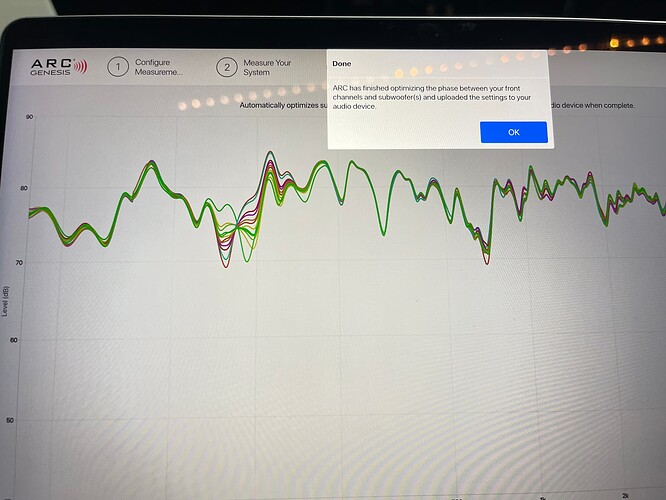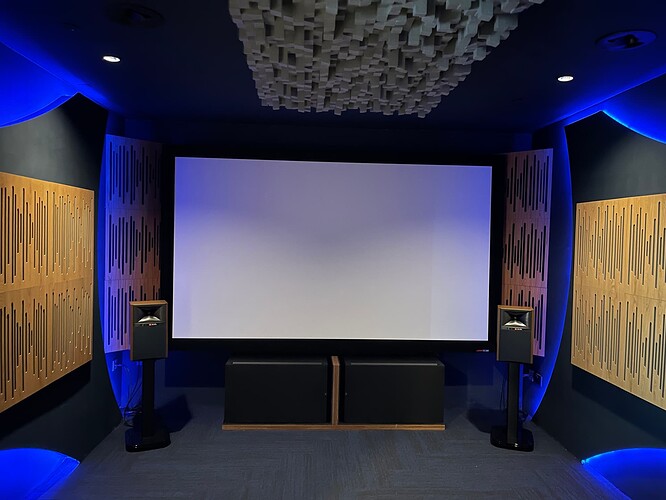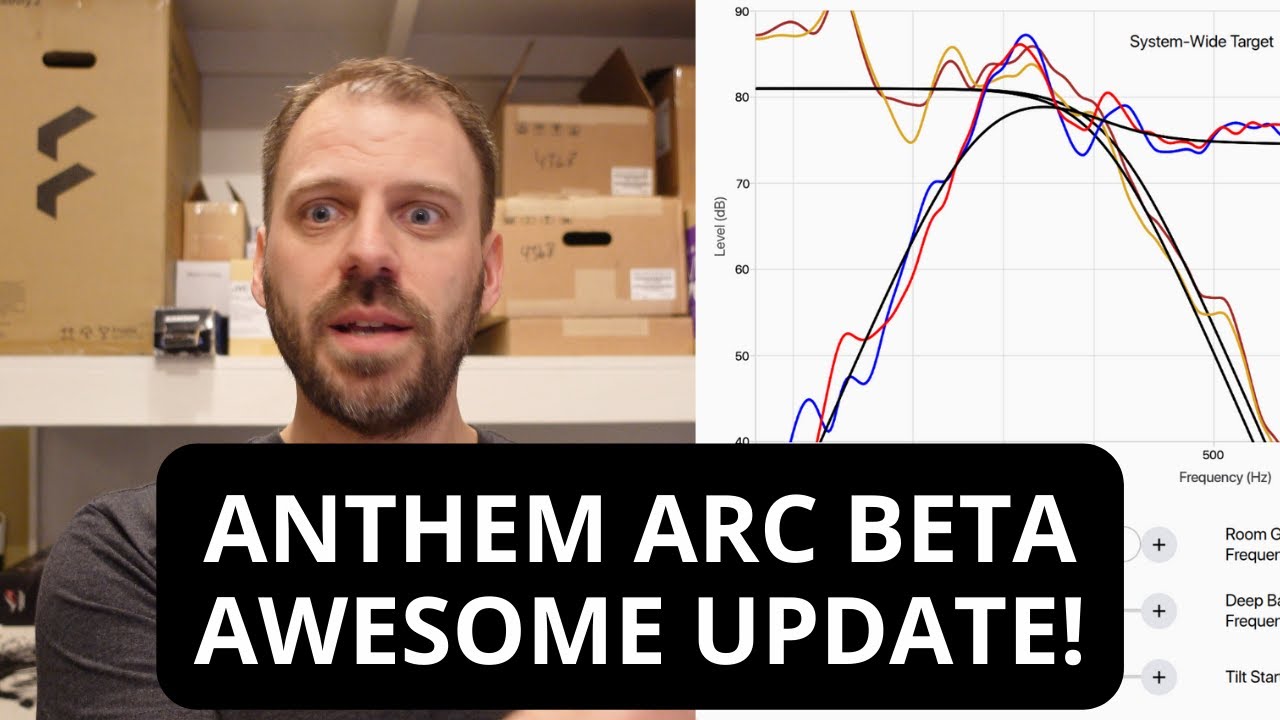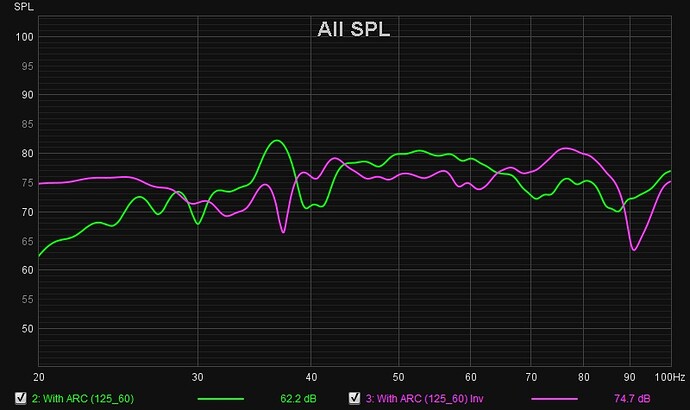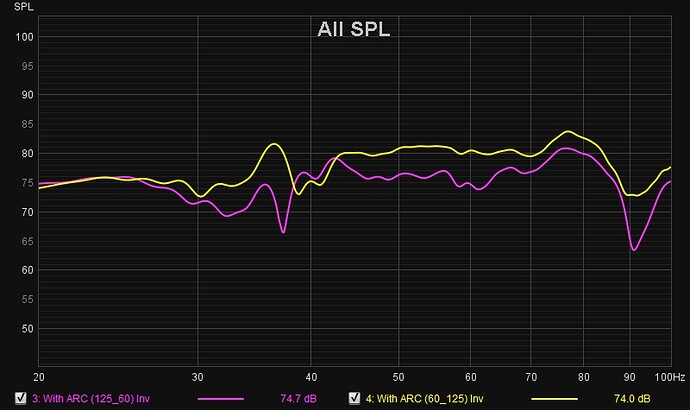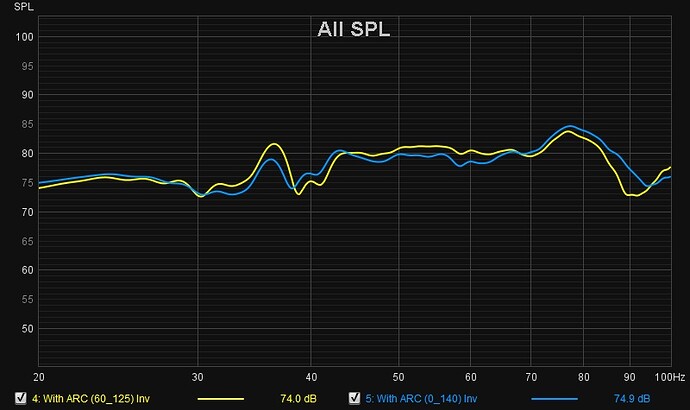I will re-do calibration this weekend in the spirit of testing for Anthem even though I already achieved very good sound for my MRX 1140. Can always revert to the old ARC if I didn’t find the new one good.
great to see new updates and looking forwards to fixing the 1st bug which is kind of annoying.
Thanks bro Desray for trying out this weekend, I will wait for your outcome first, ![]()
In prevention of cancellation. You can hear cancellation, but will be better if you can “see” it in graph with a Minidsp umik-1 mic too. Cancellation will make you unable to “hear” bass or “feel” bass when the frequency meet each other. Hence better to invert one on them.
It just seems, to me, that if we have one back and one front subwoofer, and both adjusted for distance, then if we leave them in phase the wave will arrive in phase at the listener. And if we reverse one then we are actually causing cancellation…
Let me clarify to help clear up the doubts. Perhaps I didn’t state it clearly in my past postings. First and foremost, this switching of the polarity ONLY apply if one of the 2 subwoofers are placed in the front and rear of your main listening position. Prior to ARC measurement, user will need to perform a quick measurement to get the SPL readings in place (I’m not going to repeat myself why this step is important as I’ve already mentioned in my previous posts). Besides getting the SPL reading to be in line, we can choose to flip one of the subwoofer physical polarity to inverted (180). This will usually yield a better response curve as it will get rid of some peaks and valleys if you apply this method. After achieving what you would consider as the most optimised response curve for each of your subwoofers, you can proceed with ARC calibration.
With the recent introduction of auto phase control, the polarity is included in the Web UI setting as well. However I noticed that despite having one of subwoofer polarity switch to inverted, ARC failed to pick this up and make the necessary adjustments to coincide with the physical subwoofer setting. By default, it will always stays at Normal or 0 degree polarity. This is where you will start to notice the bass is not so even from your MLP. The easy trick here is to go to the Web UI and switch the polarity to coincide with the subwoofer that has the polarity inverted. But how we tell whether it will sound right… This is where REW will confirm the response. If you don’t believe me, try it and you will see a flatter response curve hovering at 75dB across the 20 - 120hz range. Immediately you will feel the difference in your bass.
Try it and let me know…
Great sharing! Thanks. I have been using this way when I had 2 subs for my 5th Subwoofer output and keeping 0 in one and 180 on the other one, that helps to get rid of peaks.
if you got UMIK and REW, do a measurement, you would find that the front and back subs polarity is likely not aligned (refer to below impulse chart in REW, which indicate both subs are aligned with polarity, if not, you will see one sub goes down while the other goes up, for this case, once you invert one of the sub’s polarity, the curves will align again, sorry I didn’t keep an example of misaligned example to share).
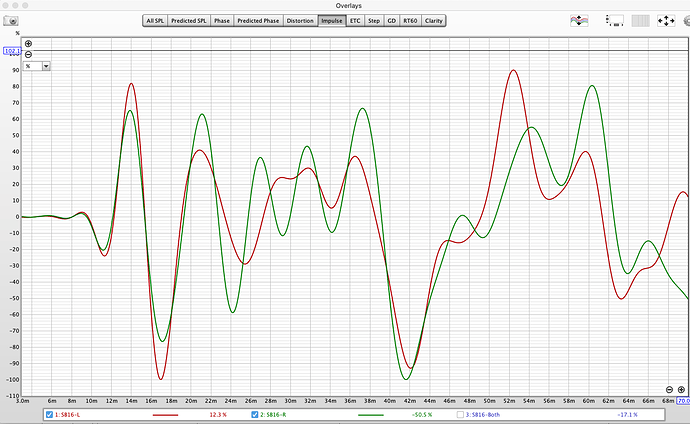
Done!
I visited JBL Gallery to listen to the full Synthesis in-wall setup with SDR35 receiver. I’m most curious about their sub SSW2 which I was originally targeting when I rebuild my AV room.
Surprisingly they put these side by side on a platform with a marine plywood divider. I would have thought the divider is irrelevant but according to the sales rep, it helped to prevent interaction between the subs. Another surprised was it is smack in the middle of the middle vs at the two corners.
anyway, I wanted to hear what a ‘professionally’ tuned system sounds like vs what I have achieved at home.
If you guys have the time, go have a listen, I’m pretty sure you will not be dissapointed. The surprising thing is that they only have an AppleTV and some iTunes files for demo.
So you may not get to hear all your fave ref… I spent a lot of time talking and not enuff time testing. I tried 13hrs - blew my mind this one. Eternals, Den of Thieves… there were some materials that the sales rep recommended…
Key points the dynamic range is unbelievable, the bass is kick-ass… BEST demo showroom to date bar none. My prev #1 was Abs Sound Focals… this is another league. You have bass that you can hear and feel.You do not need any bass shaker on the sofa!
Ok - after all that, I am so keen to re-tweak my setup.
What better time than after a new release of ARC.
I ended up with a profile without any Bass Boost.
I tried room gain at 6db but later trimmed it down to 4+
A small step closer to the new ref (JBL Showrm) but it is significantly better than my prev results.
Oh ya, I reshuffled the subs again. Prior, I have 2 subs on the side wall and 1 sub in the front wall, abt 50cm away from the wall. I relocate the two side subs to mirror the JBL showrm but at the back wall - this provided much needed kick for the tactile feel. Some big explosions I can really feel the kick at the back of my recliner. The front sub is pushed to the right corner.
Just to add,… prior to this, I tried the DTG demo generously provided by Des, it did not give much punch… however with the new retuning… very nice. The punches packs some serious bass kick.
Way to go!!!
Actually you shouldn’t be surprised about the middle of centre stage placement for subwoofers. In fact that is one of the ideal location if going for one subwoofer setup. The fact that they co-locate the 2 subwoofers as one big subwoofer is also a brilliant setup to optimize the space they have in their showroom. Wheres the centre spk, I assume its hidden behind the acoustic transparent screen or are they using “phantom” setup for centre?
Oh ignore the freestanding bookshelf speaker. That’s just alternative config incase customers are looking for more conventional setup (ie non in-wall) thus they can maximise the room for stereo demo.
This room has the SCL-4 as LCR behind the AT scrn.
Ah…I see.
I have tried the latest ARC Genesis Beta (v1.6.5) and I did not notice any significant change in the way the calibration except for the way ARC now computes the target system level to follow the SPL reading at the calibrated MV (37.5) which is around 67 - 68dB. Previously there is a discrepancy between running Quick Measurement and running a full ARC calibration. Inconsequent to the change in the way ARC computes the target system level, the volume when watching movie content is no longer the same as before. You can now increase the master volume to a higher level - e.g. from -20dB to -15dB without the fear of putting a strain on your speakers.
Notwithstanding the abovementioned, I still ran a full calibration measurement, complete with auto phase alignment with the mains. It does not come as a surprise to me that I retain pretty much the same results as I did in my previous round of calibration.
Unfortunately, this latest beta still does not change the polarity of my rear subwoofer to “Inverted” even though I have switched the physical polarity knob on my JL Audio. Because of this, my bass response is not even which you can see from the REW graph depicted below:
The green line is the default curve after auto phase alignment. As you can see there is a significant drop in SPL of > 10dB drop at 20Hz if I choose to accept what ARC gave me. With a simple selection of “Inverted” on the polarity option in the Web UI for my Subwoofer 2, though not perfect, the SPL was immediately restored to nearly 75dB range at the lower frequency range. What this means is that you get back all the rumble at the low end.
It is always good practice to use REW to do a quick reading AFTER ARC calibration as it serves 2 benefits. One is to see how the overall response of all your subwoofers when working in concert. This is a feature that is sorely “missing” in the ARC software and I do not know why Anthem refuses to implement this instead of providing a single reading for each subwoofer. The second benefit is to allow you to make finer adjustments to the phase value to achieve an even smoother response.
Here’s an example of what I meant by doing adjustments. For instance, if I stick with the original phase value of 125 degree (for subwoofer 1) and 60 degree (for subwoofer 2) for both my subwoofers and I knew I need to check the “Inverted” option in the Web UI to restore the dip in SPL in the 27Hz to 20Hz region, I can do a swap of the phase values between Subwoofer 1 and 2 where 60 degree will now be in Subwoofer 1 while Subwoofer 2 will get 125 degree. Below is the result:
As you can see, by simply swapping the values while ensuring the “Inverted” polarity was chosen, you can start to see a change in the response. A dip in the 37.7Hz and 90Hz were resolved to a certain degree.
Let’s apply my the phase values from my previous auto phase settings - i.e. 0 degree for Subwoofer 1 and 140 degree for Subwoofer 2. Here’s the response I get:
You can see the overall response is much better compared to the previous ones and the SPL reading has also increase to almost 75dB.
In the end, I have settled for my previous phase settings for my subwoofers. As long as there is no change in your equipment, speakers or placement of your MLP, the phase values should not deviate too much and you can rest assure that you can re-use those optimized values if you choose to OR you can accept what ARC gave you, like in my case, an “Inverted” polarity with phase value for Subwoofer 1 at 60 degree and Subwoofer 2 at 125 degree will yield pretty close results to my alternate set of phase values - i.e. 0 degree for Subwoofer 1 and 140 degree for Subwoofer 2. To finish off the calibration, I just need to add 1dB Room Gain to 4dB and a 0.5dB in Deep Boost Bass to get that rumble.
So what does that mean for everyone for this new beta?
To put it simply, for those who already have good ARC results then you really do not need to run another ARC calibration for v1.6.5. But it is still worth a shot for those who keep having issue with high trim values for their speakers since some AVSforum member has claimed to have lower trim values close to “0” dB (reference). For me, I simply do not have that same experience.
great job bro Desray! i will try re-cal next week during long weekend, after i finish reading all the post in AVS AVM70/90 thread, it is much more active than MRX thread. my trim value is too high and i am not used to watch movie at -25~-30dB range, so new beta should help!
Yes, if that’s what you are after…then v1.6.5 maybe your answer. Good luck ![]()
Very nice. Is this the work of ARC? Damn ! It’s auto and it’s very good, well aligned impulse. Love it! Both subs drivers are moving in out in sync… I bet the sound is awesome at your place now post ARC
Can you also share the spectrogram before and after ARC for the subwoofers, if situation allows… that will be helpful…20-100hz
